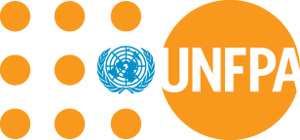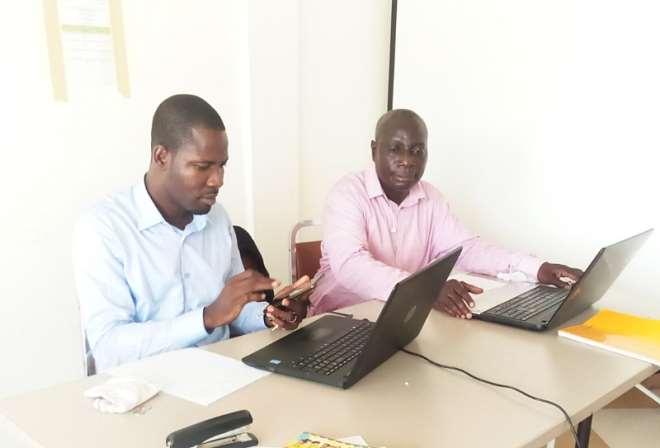
“What the census allows us to do is not just the opportunity to collect data at the locality level. …Beyond that, it gives us the opportunity to count every structure in the economy and this gives us enormous resources to better understand the living conditions of Ghanaians and better still to address the housing deficit that we have in the country.”
This was said by the Government Statistician and Head of the Ghana Statistical Service (GSS) Prof. Samuel Annim, during a training of master trainers for the census.
The 2021 Population and Housing Census (PHC), is scheduled for April and May this year. Originally, this edition of Ghana’s census was scheduled to take off last year, however the crisis of COVID-19 made it imperative to postpone it. Thankfully, the GSS, with assistance from the United Nations Population Fund (UNFPA) has since been angling to undertake it this year.
Role of UNFPA
As defined by the UN, a population and housing census is an enumeration of the total population of a country and provides data on numbers of people, their spatial distribution, age and sex structure, their living conditions and other key socioeconomic characteristics.
The UNFPA is the lead UN agency designated with the supervision of PHC of all its member states including Ghana, for which reason it is offering financial and technical support to the Ghana Statistical Service.
“UNFPA’s overarching responsibility is to support advocacy for successful census taking, provide responsive technical assistance and oversight, and support mobilization of adequate resources to ensure that the census is implemented in accordance with the United Nations Principles and Recommendations for Population and Housing Censuses (P&R) for 2020 Round of PHCs,” said Dr. Collins Opiyo, UNFPA’s Chief Technical Advisor at the GSS.
He told ModernGhana News that the UNFPA, in keeping with its role, is providing government with the necessary financial and technical support towards its census.
Dr. Opiyo noted that the mismatch between population data and settlement data has been a challenge in census exercises over the years.
“This year’s exercise intends to address these challenges by means of a purposeful technology and expertise,” he explained.
The 2021 PHC will be using interactive maps instead of static maps used for previous censuses. The cutting technology will include digital devices such as satellites for imaging through control on tablets, GPS coordinates and aerial photography among others. This technology mix will provide platform for enumerators to zoom in to view structures in enumeration areas for more accurate and easier data collection.
“In addition, data scientists have been equipped to extract data that is actually related to population settlement and other activities that we do, as well as look into database that are automatically generated by human activities (big data) and use that to augment data that we cannot ourselves collect in the field or can collect but will spend much time and resources, to fill the gaps,” Dr. Opiyo said.
Already, the cutting edge technology for deployment in this year’s census has already exposed data lapses in areas such as Kpone Katamanso and Fanteakwa in the Greater Accra and Eastern Regions respectively.
And this is due to the usage of satellite and interactive maps for visualization and interactive dissemination platforms, said Dr. Opiyo.
Impact of COVID-19
The outbreak of COVID-19 has encumbered the 2020 PHC. After constraining authorities to postpone it from 2020, it has continued to haunt the program into 2021.
"Already, it has delayed the procurement of some tablets through disruption in supply chain and logistical conveyancing, increased cost of implementation, whilst activities including pretesting and personnel training have had to be repeated," said Dr. Opiyo.
Also, the extension of personnel contracts, duration of service of experts, and the observance of safety protocols have increased implementation costs; and these have been as a result of the need to adopt new dimensions to publicity, education and advocacy strategies.
An amount of ghc477million had been budgeted for the program but the COVID-19 has created a funding gap of $12.6million. The UNFPA is also wary that the second wave of the virus puts enumerators at a high risk of infection.
However, Dr. Opiyo says he is optimistic because of successes chalked during the first wave. “The GSS has largely succeeded where others failed – found ways and means to continue to implement census activities during the pandemic, thereby learning valuable lessons that could prove extremely useful going forward, and that, has been lauded by its African peers in this regard.”
Status of PHC
About 131, 000 localities, and 51,000 enumeration areas have been identified with 70,000 field personnel recruited for the exercise.
Currently, Field mapping activities have been completed, enumeration instruments and procedures developed, tested and finalized.
Also, recruitment of field personnel and training of Master trainers have been completed while training of national trainers has commenced.
Data collection tablets (partially) delivered whilst national, regional and district implementation committees inaugurated/activated, census campaigns (publicity, education and advocacy activities) commenced, indicating that preparations for the Ghana 2021 PHC are at an advanced stage.
The process for the 2021 PHC is at the peak awaiting the recruitment of enumerators and subsequent commencement of the exercise.
Government’s Commitment
According to the Government Statistician, the “GSS is prepared for the 2021 PHC from the financial and technical operational point of view.
Prof. Annim stated that although COVID-19 has extensively affected the 2021 PHC conduct, the GSS's interest remains in the desire to generate quality data.
With respect to the funding gap of $12.6million due to COVID-19, “We have already initiated discussions with the Ministry of Finance (MOF) and we’re pretty optimistic that the funding gap will be covered,” the government statistician said.
From all indications, the 2021 population and housing census is bound to happen this year.
Outcomes of PHC
Data disaggregation on sex, demographics, education, health, residential and employment are among what the PHC anticipates to cover.
These data assist government’s program formation and policy implementation in the distribution of resources for economic growth.
The PHC uses structured and unstructured questionnaires to respondents of households to generate data. Key structured questions in the process include: age and sex, marital status, household composition and size, educational attainment and literacy, location of residence and place of prior residence, occupation and labour force participation and living quarters characteristics.
However, the 2021 PHC will focus on individuals in response to some specific questions unlike previous censuses. For instance, questions related to adolescent and sexual reproductive health requires the individual to respond to provide data quality.
Sex and age basically provide data that determines age groups to crudely observe migration, especially among the working age cohorts and help identify segments of the population that require different types of services.
Whilst marital status provides insight into family formation and housing needs, household composition and size is used to help determine housing needs for related and unrelated household.
Educational attainment and literacy, provides information on the educational skills of the workforce. These measures also help planners select the best strategies to communicate with residents.
Location of residence and place of prior residence; help assess changes in rural and urban areas. Place of prior residence helps to identify communities that are experiencing in or out migration
Occupation and labour force participation also helps to provide insights into the labor force of a given locale. The information can be used to develop economic development strategies, whilst living quarters characteristics can help planners determine housing and community facility needs.
These are points that are derived from data disaggregation, therefore, the cooperation of citizens in the census process remains imperative.
Public Interest
Public interest in the PHC remains a key role in the determination of accurate data for purposes of the PHC.
A random interview with some members of the public revealed diverse and interesting views.
“I’ve heard information on the census but not interested because its purpose has not been felt,” Bro Sammy, a resident at Kasoa police quarters said.
“I am a construction worker and I expect that the data produced will be made available to the public to help me in my work, but no, that’s not the case.”
For the Reproductive Advocacy and Health Education (RAHE), an NGO, also based in Kasoa in the central region, the UNFPA should be commended for the key role it is playing in the Census.
Mr Paul Teiko Tagoe, Programmes Coordinator for RAHE Ghana said that “We are much excited that the PHC is happening this year because we are into reproductive health and there are a lot of challenges in the reproductive sector. COVID-19 has compounded the challenges of girls and adolescent health and it is our hope that the disaggregation of data will help in our work towards attaining the Sustainable Development Goals (SDGs).
“We hope that at the end of the census, girls and youth development challenges will be captured and addressed. Because at RAHE, our main focus is water and sanitation, gender equality, adolescent health, girl child education and family planning.”
Mrs Adukpo, a trader says, “I sell at the Kasoa new market and if truly the census is to provide data the will help address economic challenges then, the congestion in many of our markets should be highlighted, especially in this time of COVID-19”







 This IMANI job no dey pap; the people you are fighting for are always fighting y...
This IMANI job no dey pap; the people you are fighting for are always fighting y...
 Prof. Naana Opoku-Agyemang has changed; you can see a certain sense of urgency –...
Prof. Naana Opoku-Agyemang has changed; you can see a certain sense of urgency –...
 MFWA Executive Director slams Akoma FM for engaging in ‘irresponsible’ media pra...
MFWA Executive Director slams Akoma FM for engaging in ‘irresponsible’ media pra...
 ‘Women must become millionaires too’ — Prof Jane Naana on establishment of Women...
‘Women must become millionaires too’ — Prof Jane Naana on establishment of Women...
 Some believe only in Ghanaian votes, not Ghana — Kofi Asare jabs politicians
Some believe only in Ghanaian votes, not Ghana — Kofi Asare jabs politicians
 Plan to make BEST sole aggregator of Sentuo Oil Refinery will create market chal...
Plan to make BEST sole aggregator of Sentuo Oil Refinery will create market chal...
 2024 elections: I can't have the man I removed from office as my successor — Aku...
2024 elections: I can't have the man I removed from office as my successor — Aku...
 2024 Elections: Immediate-past NPP Germany Branch Chairman garners massive votes...
2024 Elections: Immediate-past NPP Germany Branch Chairman garners massive votes...
 Gov’t focused on making Ghana energy self-sufficient, eco-friendly – Akufo-Addo
Gov’t focused on making Ghana energy self-sufficient, eco-friendly – Akufo-Addo
 April 25: Cedi sells at GHS13.74 to $1, GHS13.14 on BoG interbank
April 25: Cedi sells at GHS13.74 to $1, GHS13.14 on BoG interbank
